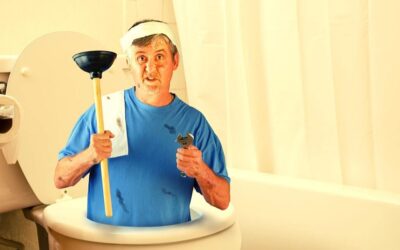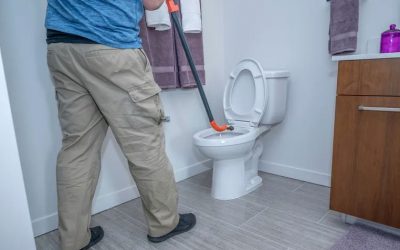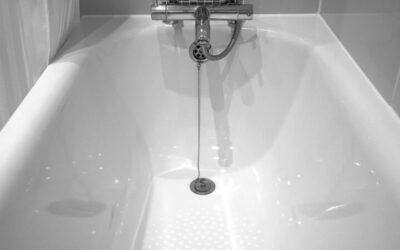Basements may be more common in the midwest, but many older and luxury homes have them across the USA, which means they require a basement floor drain. Floor drains are usually found in public restrooms, showers, and laundry rooms, and they are designed to collect excess water from sink, toilets, tubs, and other plumbing in your home. The water is then directed safely to a sewer or storm drain to prevent flooding. In order to maintain the functionality of a floor drain, regular drain cleaning is needed.
What Causes Basement Floor Drain Backing Up?
If your basement floor drain is backing up, it’s important to identify why it’s clogged. There are a variety of causes for this issue, such as wastewater looking for an escape, backup of a washtub basin or washing machine, tree roots, pipes that have deteriorated, flushing of improper objects, and basement drain and trap dry out. Knowing why the basement floor drain is backing up and how to fix it can help you prevent future backups and maintain a healthy drainage system.
Debris like dust and pet hair can easily find its way inside the drain if you are not careful when cleaning the floors – sweeping dirt and debris into the floor drain is a common mistake. Additionally, a dry P-trap can let foul odors from the sewer into the home.
Backup of a Wash Tub Basin or Washing Machine
If you have a washtub basin in your basement and notice it is backing up, it could be due to sediment and debris clogging the drain. A plunger can help dislodge the debris, but if that fails you may need follow additional steps unclog the floor drain we’ll get to soon. Putting a strainer on the drain can also help prevent these types of clogs. Similarly, washing machines can have hoses that are clogged or blocked.
Tree Roots In Drain Pipes
Tree roots can cause basement floor drains to back up, especially when there are cracks in the sewer drain line. When the water seeks out the lowest point in the home, tree roots will often follow and clog the drain. To remove these roots, it’s best to have a drain camera inspection done and use a drain jetter to blast away any sediment and gunk. Additionally, you should consider relocating any trees near the sewer line in order to avoid this problem in the future.
Flushing of Improper Objects
Sometimes objects get flushed down toilets that shouldn’t be, such as toys, feminine products, napkins, paper towels, or baby wipes. Toilet paper can also cause backups if it’s not the right type. To prevent this kind of problem, make sure you only flush toilet paper and nothing else. One-ply toilet paper is preferable because it dissolves more easily.
How to Clear a Basement Floor Drain Clog
When you discover your basement floor drain is clogged, it’s important to clear it quickly in order to avoid flooding. With some basic drain cleaning tools you can unclog the floor drain without too much trouble.
- Locate the basement floor drain. This is usually a grate located near the lowest point in the basement floor.
- Find the cleanout plug. This is a plug located near the floor drain that can be removed to allow access to the drain.
- Remove the cleanout plug by turning it counterclockwise with a pipe wrench or pliers. If the cleanout plug is stuck, you can try tapping it gently with a hammer to loosen it.
- Once the cleanout plug is removed, you should see a small opening into the drain pipe. Use a flashlight to look inside the pipe and identify any blockages.
- If you see a blockage in the drain pipe, try using a plunger to loosen it. Place the plunger over the opening in the drain pipe and push down firmly several times.
- If the plunger does not work, you can try using a drain snake. A drain snake is a long, flexible tool with a auger on the end that can be used to break up and remove blockages in drain pipes. Insert the snake into the drain pipe and rotate it to break up the blockage.
- Once the blockage has been removed, run some water into the drain to flush out any remaining debris.
- Replace the cleanout plug by turning it clockwise with a pipe wrench or pliers.
- Test the drain to make sure it is flowing properly.
If this doesn’t resolve the clogged floor drain issue, contact a local plumber near you.
Cleaning Up the Mess
Once the source of the backup has been identified and fixed, it’s important to clean up any mess that resulted. Moisture and smell are both concerns, so use a dehumidifier and fans to make sure everything is dry. You should also use strong detergents to clean up any affected surfaces.
Basic Basement Floor Drain Maintenance
It’s best to clean drains at least four times a year in order to keep them healthy and working properly. If your basement floor drain has not been cleaned in a while, use a safe liquid drain cleaner to remove any debris. If you’re having trouble with the drain, call a professional.







